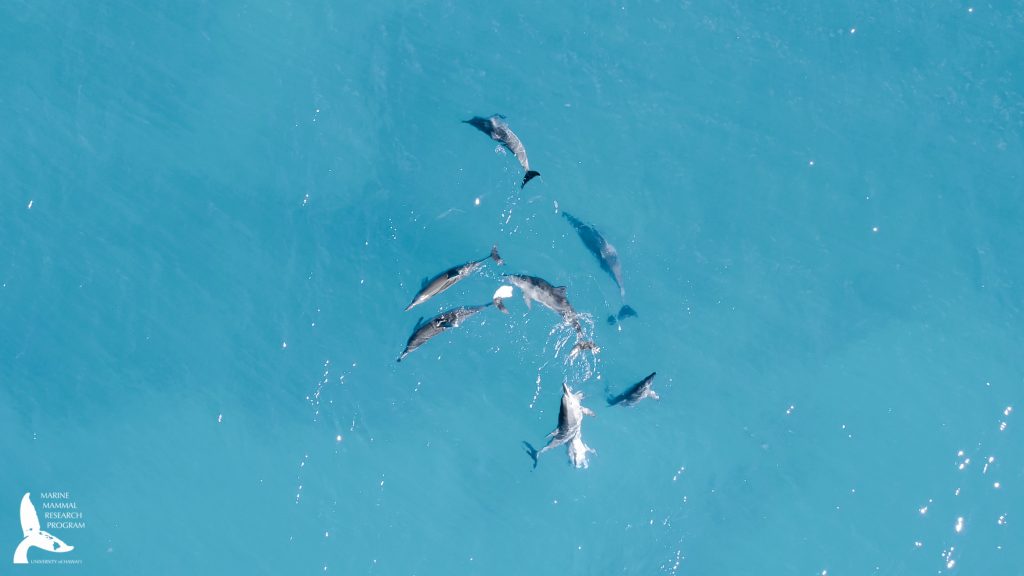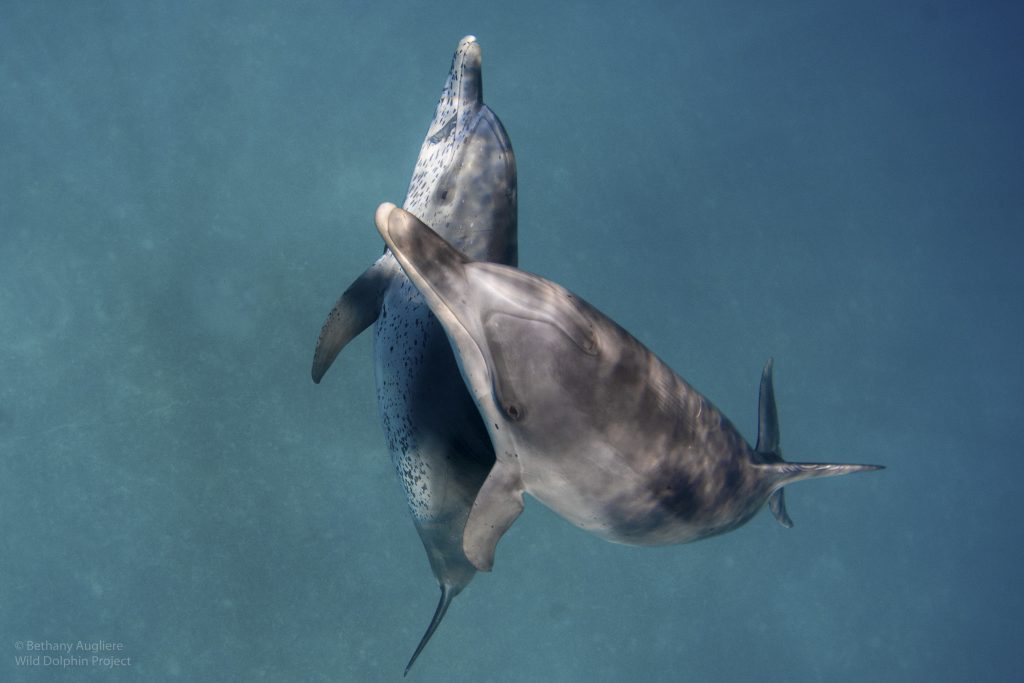
An Atlantic spotted dolphin, named Tigger, swims with plastic in the Bahamas. Photo by Bethany Augliere.
In the Bahamas, spotted dolphins play with sargassum seaweed. They play games of keep away and chase, passing the seaweed effortlessly from their rostrum, to pectoral fin to fluke. But sadly, they also play with plastic — we witness it.

Spotted dolphins playing with sargassum. Photo by Bethany Augliere.
So far this summer, we’ve already observed dolphins playing with plastic 4 times, which is a bit higher than our yearly average (see chart below).

But this doesn’t just happen in the Bahamas — it’s a global problem.
In Hawaii, Liah McPherson, a WDP field assistant and current graduate student in the Marine Mammal Research Program at Hawaii Institute of Marine Biology (University of Hawaii at Manoa), says she witnesses the resident spinner dolphins playing with plastic multiple times a field season.

Spinner dolphins play with plastic in Hawaii. Photo by Liah Mcpherson.
It’s estimated that 56% of the planet’s whale, dolphin and porpoise species have consumed plastic, with plastic harming more than 800 marine species globally. It’s a problem for many reasons, from entanglement to ingestion that can result in death or illness. Many animals, like sea turtles and seabirds, starve because their stomachs are completely filled with plastic, which blocks their digestive systems. And if current trends continue, the amount of plastic entering the global oceans will quadruple by 2050, according to the Environmental Investigation Agency.
It’s only going to get worse, unless something is done.
Ingesting marine debris has been recorded in 81 of 123 marine mammal species, according to a 2020 study published in the journal Conservation Letters. It only takes one toxic item to result in death, whether that’s from causing a gastric blockage, starvation, perforation, or rupture of the gastrointestinal tract. And as more debris is ingested, the risk of death increases. The most common common items likely to result in harm from ingestion by marine megafauna, like whales and sea turtles, include plastic bags and balloons, followed by monofilament line and plastic utensils. According to one study, a sperm whale was found with 135 items in its stomach, most of which were plastic bags.
Additionally, ingesting plastics and marine debris can lead to issues with swimming, making whales and dolphins more vulnerable to ship strikes and boat strikes, with half of ship-struck cetaceans having ingested plastic.
In the 2020 study, scientists recommend that policymakers focus on reduction through regulation, prohibition, and replacement of high-mortality risk large items such as plastic bags, plastic packaging, plastic sheets, fishing rope, nets, tackle, and balloons. While change needs to happen at the policy level, you can also take action in your daily life to help marine mammals.
Here are 7 tips to reduce your plastic use, but there are so many more! Great creative and find ways to reduce your consumption and contribution to waste.
1. Eliminate single-use plastic and instead use reusable bags, reusable water bottles.
2. Store leftovers in glass jars rather than plastic bags and containers
3. Avoid balloons at birthday parties, baby showers, etc…
4. Say no to disposable cutlery and plastic straws, or buy eco-friendly version made from recycled materials
5. When the option is present, buy products in boxes rather than plastic – like laundry detergent
6. Use a razor with replaceable blades rather than disposable razors
7. When ordering ice cream, get a cone instead of a cup that also needs a plastic spoon

Two young dolphins play with a piece of plastic, and at one point, even ingest it then spit it back out. Photo by Bethany Augliere.
